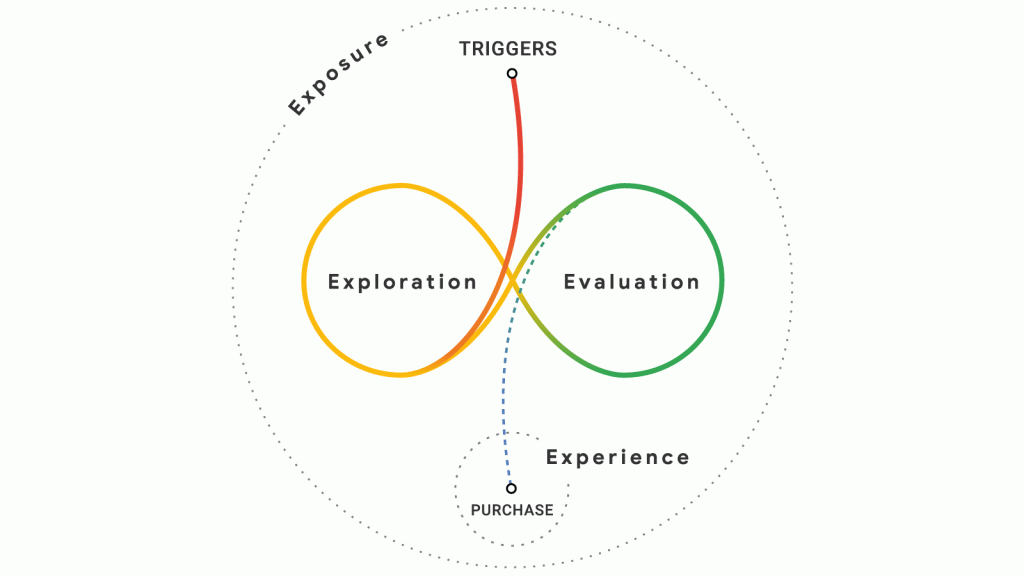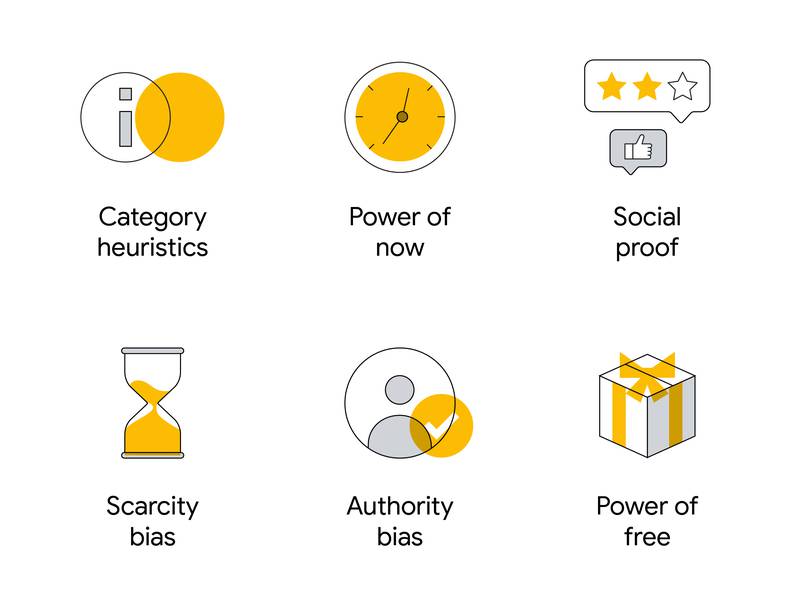Purchase decisions can be overwhelmingly complicated and paralysing, with a constant stream of information, brands and benefits to consider. Thanks to the ease of search engines, consumers now navigate purchases via an undulating loop – an update on the traditional funnel model. After a recent research project, Google’s consumer insights team devised this revised purchase cycle. Sitting between “triggers” and “purchase” is now the “messy middle”: a stage involving exploration and evaluation, finding information and then reducing it to conclusions. What exactly does the “messy middle” mean for brands today, and how can a digital agency streamline this? Read on to find out more.
What is the “messy middle”?
No two journeys within the “messy middle” are the same, but this stage aims to identify the steps between the initial trigger and eventual purchase decision. Aside from offline sources of information – magazines, TV, radio, shopfronts, etc. – this enlarged middle section has become more complex with the rise of digital media and, primarily, search engines. At our fingertips are endless pages of offerings, deals and advice with so much to digest and many options to choose from.
 Customers’ purchase journey from ‘initial trigger’ to ‘eventual purchase decision’ (Source: https://www.thinkwithgoogle.com/)
Customers’ purchase journey from ‘initial trigger’ to ‘eventual purchase decision’ (Source: https://www.thinkwithgoogle.com/)
It is now dubbed “messy” due to the non-linear nature of decision-making. Consumers ebb and flow between exploring (finding information) and evaluating (narrowing down choices), which forms a loop until a final purchase decision is made.
What does the “messy middle” mean for brands?
With the abundance of information and growing lists of competitors, it’s easy for a brand to get lost in the process. Although complex, the “messy middle” allows the opportunity for growth and differentiation. It’s important for established brands to maintain their presence and continue to serve the consumer without stepping off the pedal. For new brands, the right strategy can disrupt the consumer decision-making and information-seeking process. If addressed correctly, customers can be won and retained, with the potential to come out on top of more well-known brands.
Ultimately, it comes down to consumer ease throughout this loop. A brand must always be “on.” Potential customers need to find the brand, find the relevant information and feel satisfied to continue through the purchasing process. User experience is vital here, considering aspects like speed, mobile accessibility, navigation, and pop-ups.
 6 biases that influence purchase decisions (Source: https://www.thinkwithgoogle.com/)
6 biases that influence purchase decisions (Source: https://www.thinkwithgoogle.com/)
The research found that consumers now use a variety of mental shortcuts and cognitive biases to simplify and help sift through the abundance of messages and options. These are:
- Category heuristics – shortcuts that help reduce the mental effort when evaluating a certain category. Examples include the carats in a diamond or the Energy Star rating of an appliance.
- Power of now – consumers want products now; the longer they have to wait, the less desirable the offering. Same-day or next-day deliveries are a clear example of this.
- Social proof – when overwhelmed, consumers will turn to others and copy their behaviour. Online ratings and reviews play a large role in determining this.
- Scarcity bias – the age-old reality that as availability decreases, the allure increases. Messages around certain time limits, strict quantities (e.g. only x number of shoes in production) and limited access to particular groups help accentuate this.
- Authority bias – consumers turn to trusted sources and experts, altering behaviours and eventual decisions based on these findings. Consumers feel more affinity for unbiased, external publications where an individual’s authority is made clear.
- Power of free – never underestimate the appeal of “free” in the consumer mind, whether it is a gift with purchase, a buy one get one free strategy or free shipping.
How can a digital agency assist?
Google’s researchers listed three main aspects for brands to consider when addressing the “messy middle.”
- Ensure brand presence. As mentioned above, a constant brand presence means sitting at the forefront of the consumer’s mind while searching. Not only this, but it’s important to make retrieving relevant information simple while they are exploring and build a seamless user experience. Make sure the website is helpful and easy to navigate, addressing all relevant questions. Above this, also consider a range of online marketing activities, including Google Ads, SEO optimisation, social media presence, video, news and links on other relevant external websites. The strategy is to meet the consumer where they are, in as many places as possible.
- Use Cognitive biases to inform marketing decisions. Take note of each of these aspects and build a compelling and satisfying offer. Use targeted ads, promote good reviews, establish an authoritative figure and embark on a digital PR strategy, consider the power of “free,” and so on.
- Reduce the time consumers spend in the “messy middle.” From a brand perspective, the less time a consumer spends here, the better, as they move more quickly from the initial trigger to the final purchase. With more time, the consumer is exposed to more information and competitors, potentially pulling them to make a different choice. By presenting all the information to the consumer from the start, with easy accessibility and the social proof behind it, the consumer is more likely to feel validated and secure in their purchase decision.
As a dedicated digital marketing agency, Real Clicks has the tools and experience to better enable brands to stand out in the “messy middle.” Our dedicated teams address various avenues of digital marketing to ensure consistent and constant brand presence, from SEO and social media to content, PR and branding. With these customer behaviours in mind, we work alongside our clients to develop a cohesive strategy and build better brands.

 X
X

 X
X